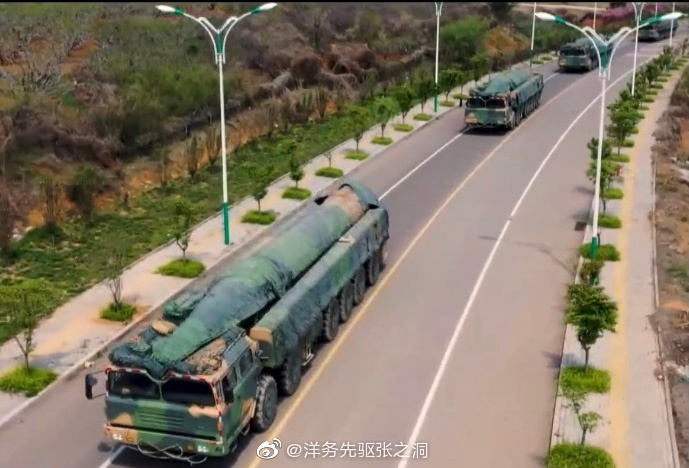The sustained effectiveness of Ukrainian unmanned surface vessel (USV) attacks on Russian naval facilities and vessels has made the world aware of how dangerous these drone boats can be. China has been watching the Ukraine war closely since the beginning and has taken notice of the USV attacks.
The persistent strikes on its Black Sea Fleet (BSF) headquartered in Crimea has forced Russia to move its fleet farther away from the reach of Ukrainian missiles and USVs. Military experts and Western officials have acknowledged this as a tactical Ukrainian victory despite the country not having a typical navy of its own.
Military analysts believe that the employment of USVs by Ukraine has provided a realistic image of large-scale naval warfare for navies throughout the world. In addition to damaging several Russian ships, the USVs have demonstrated their ability to breach the harbor defenses and inflict damage on ships in the safety of guarded naval facilities.
Having said that, Ukrainians are not the only ones who have acquired, developed, and deployed USVs in combat against a powerful enemy. There is evidence that Taiwan is also acquiring and mass-producing USVs as part of bolstering its combat prowess against a potential Chinese invasion.
China Assesses Threat Posed By USVs
A US-based global policy think tank, RAND Corporation, directed the reader’s attention to a Chinese article in the defense periodical Naval and Merchant Ships, published in January this year. The article provides insight into how China is watching Ukraine’s USV war against Russia and exhorting its forces to devise an action plan against such threats.
Authored by three analysts of the People’s Liberation Army Navy (PLAN), the article titled “How to Defend Harbors Against USVs?” noted that “the large-scale application of various types of USVs is already a new threat to modern naval warfare.” It warned that the USVs already pose dangers to the advancement of conventional military doctrines, weaponry, equipment, organizational structures, combat tactics, and war philosophies.
Chinese Authors Decode USV Threat
First, the PLAN analysts list five advantages that USVs have over other military vehicles in combat: good concealment, inexpensive manufacturing, low operating costs, significant destructive power, intelligent control modes, and the capacity to function independently.
The authors then point out that USVs integrate “diversified attack modes” using modular construction and the incorporation of diverse armament systems.
Regarding their capacity for destruction, the Chinese writers observe that USVs are more dangerous than air strikes and that the USV warheads have greater explosive power compared to missiles.
Due to their inexpensive manufacturing costs, USVs may also be produced and used on a large scale, enabling them to “harness wolf group tactics to achieve greater destructive power.”

The evaluation then lists the difficulties in protecting ships in port and port infrastructure from USV assaults. Three port security issues are highlighted by the PLAN analysts. First, they state plainly that “the targets are obvious,” which refers to the ease with which one can identify and attack the naval infrastructure, including buildings, docks, and ships anchored.
Second, the assessment states that there is a “high degree of information transparency.” This alludes to the idea that big ports are difficult to conceal and the ease with which modern surveillance equipment can identify targets within ports.
Third, the authors warn that these targets have “a high probability of causing damage.”
An Action Plan To Combat USV Threat
To counter USV threats to ports, the PLAN experts suggest implementing “a multi-domain three-dimensional defense system of sensing, defending, and attacking.’”
The PLAN experts state that “USVs are susceptible to interference and detection, especially when it comes to their communication and navigation links.”
One can employ both passive and active strategies. The authors advise “building a modern defense system that moves from being just a point defense to a three-dimensional perimeter and surface defense” for coastal security.
The analysts suggest that a variety of players, including “local governments, public security, and maritime affairs,” should coordinate the information flows for this defense. They emphasize the significance of floating defensive barriers as a component of this defensive system, similar to those that the US, Russia, Singapore, and other nations deploy to safeguard ports, naval bases, and other infrastructure.
China, on its part, has also made use of floating barriers against the Philippines, as accused by the Ferdinand Marcos Jr government since last year, even though the report made no mention of the same.
The Chinese article concludes with a discussion of how to employ a “consolidated multi-domain strike system” to combat USV threats.” The analysts suggest a new type of kill chain network with more standoff advantages…using relevant weaponry and upgraded asymmetric combat styles.”
They suggest maximizing combat effectiveness while decreasing the cost of precision-guided weapons. They suggest using “a multi-layered strike system and multi-domain interlocking fire network of electromagnetic and conventional weapons” to accomplish this. This, they reason, would enable the PLA forces to strike targets at long, medium, and short ranges.
The longest-range capability of this system includes attacking USV “forward operating bases, assembly areas, and production sites” with precision-guided weapons and even hypersonic missiles.
Further, the authors propose that the employment of USVs to patrol for, find, and launch assaults against hostile USVs would be a way to take warfare into the fully autonomous domain.

The analysis comes at a time when these USVs are fast emerging as a symbol of asymmetric warfare in Taiwan after their stellar performance in Ukraine.
Since China has intensified its rhetoric about occupying Taiwan and integrating it with the Chinese mainland in the future, there have been predictions that it is also consistently preparing for it by keenly watching the war in Ukraine and drawing important lessons.
Thus, the assessment is significant, given that Taiwan has already focused its attention on Unmanned Surface Vessels (USVs).
Taiwan Keen To Acquire Unmanned Surface Vessels
The Taiwanese military is considering purchasing 200 units of an uncrewed surface vessel (USV) that can be used for multiple purposes. The list includes target drones and drones equipped with detachable modules for electronic intelligence (ELINT), reconnaissance, and surveillance, as well as attack-oriented warheads.
Military planners on the island anticipate starting mass production by 2026, with technology being developed by the National Chung-Shan Institute of Science and Technology (NCSIST).

According to reports, Ukraine’s effective employment of kamikaze USVs in the Black Sea against Russian warships belonging to the Black Sea Fleet (BSF) had a significant influence on the strategy. It also aligns with the theory of the former Taiwanese Chief of Defense Staff, Admiral Lee Hsi-ming, known as the Overall Defense Concept (ODF).
The theory essentially mentions that to fight a protracted war at a strategic level in a multi-layered campaign of attrition, thousands of inexpensive expendable drones, missiles, unmanned naval systems, fast-attack vessels, missile boats, and mine layers must be acquired.
The serial production of a modular, multi-function USV poses the first significant threat to the PLA Navy warships and amphibious landing vessels that are expected to surround the island and enforce a blockade.
Although it is not anticipated that the USVs will destroy the PLAN or deliver it a crushing defeat, its primary goal would be to impede and complicate Chinese naval activities to buy time for the arrival of assistance from allies such as the US or Japan. That assistance might, however, change the game.
Last month, reports regarding Taiwan’s plans to integrate drone boats also quoted an unnamed Taiwanese defense official who described the tactical scenarios involving USVs. “The armed sea drones could effectively counter or deter Chinese People’s Liberation Army Navy warships and landing craft near Taiwan,” the official said.
“(To carry) out raids against Chinese navy ships, the limited range of the autonomous watercraft could be improved by releasing them from larger naval vessels,” the official added.
- Contact the author at sakshi.tiwari9555 (at) gmail.com
- Follow EurAsian Times on Google News




